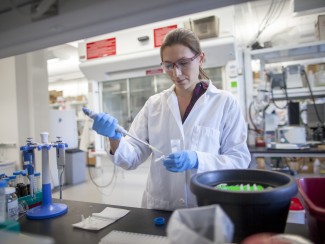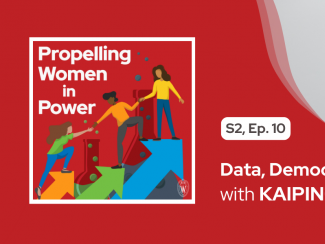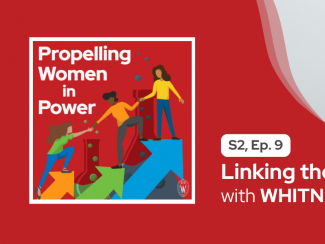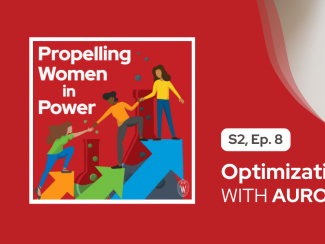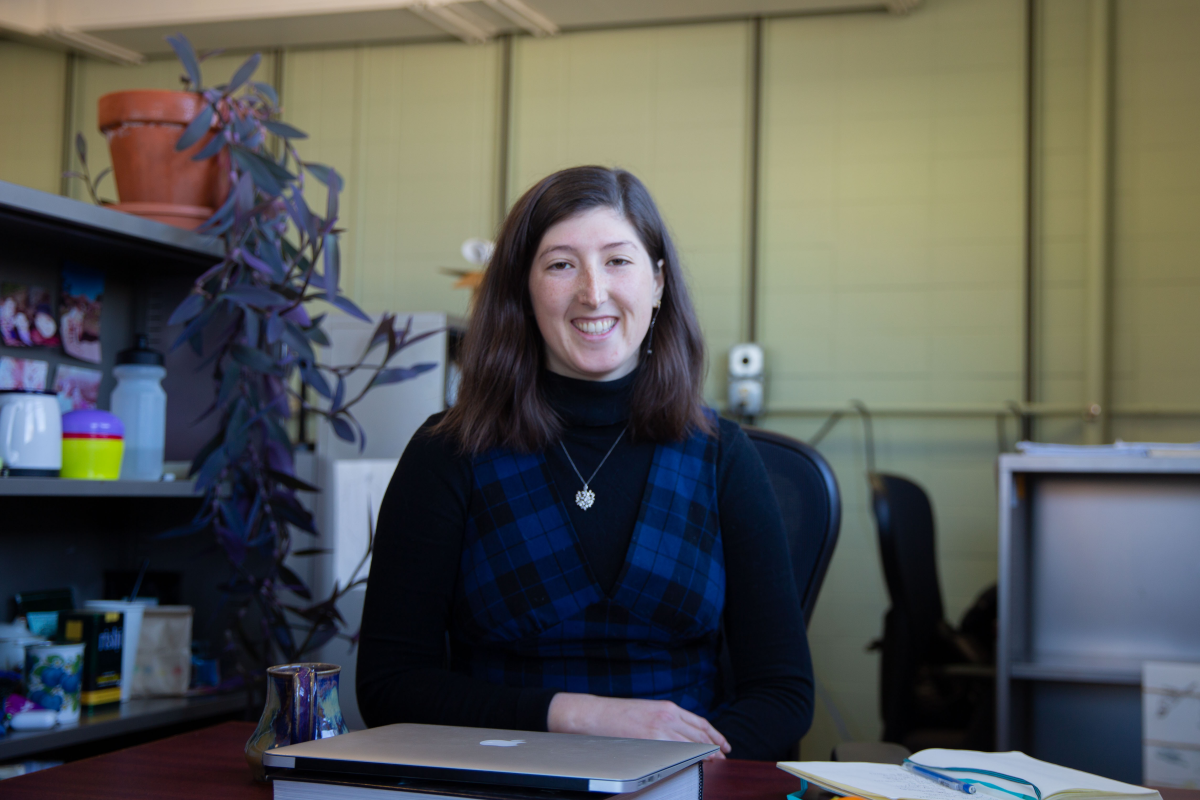
Our graduate students and postdoctoral researchers play an enormous role in the transition to a sustainable, resilient, and affordable energy future that is centered on social and economic equality. From lab experiments to field work to classrooms, these leaders of today and tomorrow are our catalysts for energy discovery.
In this series, we learn more about what inspired these talented researchers, what brought them to their field of study, and the questions that drive their work at the Wisconsin Energy Institute (WEI).
Ciaran Gallagher is a graduate researcher in the Holloway lab studying air quality models. Ciaran studied environmental chemistry at Wellesley, but has since used her analytical skills outside of the laboratory to assess science policy and environmental justice.
At Wellesley, you created your major, environmental chemistry. What drew you to create that major?
One of the reasons why I created my own major is that Wellesley didn't have an environmental science degree. There was environmental studies, which is very interdisciplinary, but it didn't get to the depth of scientific principles that I was looking for. Double majoring in chemistry and environmental studies wasn’t an option because I would have had space to take any of the environmental science lab classes, which is what I really wanted to study.
I had supportive advisors in both the environmental studies and chemistry departments, as well as my research advisor who is housed in the geosciences department. So, I created a major that included classes from all of those programs. It was very interdisciplinary, including environmental geochemistry classes alongside social science classes and a writing capstone.
What inspired you to focus on chemistry?
I took an environmental studies 101 class during my first semester at college. It felt like chemistry was the piece that I didn't understand and I thought it would unlock everything else. Chemistry was a way to get depth into how to approach environmental systems.
Eventually, I was able to apply chemistry principles to environmental science and geoscience questions. This was exemplified in the lab research I did at Wellesley, which investigated lead concentrations of fruit grown in urban environments. If fruit trees were grown in soils with really high lead levels, would lead get to the fruit and cause exposure to people eating fruit off trees grown in the middle of the city? I was able to think about that from both the social aspect, looking at who was picking this fruit and who has access to this fruit, but also the geochemistry aspect, including what mechanisms would get lead from the soil into the fruit or other produce.
It felt like chemistry was the piece that I didn't understand and I thought it would unlock everything else. Chemistry was a way to get depth into how to approach environmental systems.
Ciaran Gallagher
During college, you had this laboratory experience, but after your undergraduate degree, you worked in local governments doing science policy work with AmeriCorps. What prompted you to move toward policy work?
For most of my time in undergrad, I had the intention of going into policy. But, I wanted to use more quantitative analytical skills. My desire to work on policy implementation was cemented one summer in undergrad when I worked at a NOAA Research Lab. It was an amazing opportunity and I was so grateful to be part of a federal research project, but there was such a long-time scale for the research I was doing to actually make any tangible difference. It didn't feel fast enough for me, which cemented my desire to work more directly in policy spaces. I didn't have much experience in policy spaces when I graduated from undergrad because I had leaned so heavily on science and research, so I was grateful for the opportunity to work for AmeriCorps in their CivicSpark program.
What type of work did you do with CivicSpark?
CivicSpark’s purpose is to build capacity in local governments – especially municipal city governments – to enact climate, water and energy-related initiatives and policies. I worked at two cities in the Bay Area, the City of Hayward and the City of Dublin, doing greenhouse gas inventory, analyzing municipal energy usage and generation, and contributing to climate action planning for the cities. The municipal level is where policy is implemented on the ground. California can have these grand policies about creating walkable cities and adding public transit, but if the city governments don't actually implement it, it's not going to happen. It was great to see how change happened at the city level.
Also, you had to balance these broader policy initiatives with the experiences of people living in these cities. Rehabilitating a park is just as important for people to have access to green space in their community as it is for its environmental benefits.
After that, I did another fellowship through the state of California. I moved to Sacramento and worked at CalRecycle, which regulates waste and recycling for the state. I was very grateful for my mentor at CalRecycle who let me choose what projects I wanted to engage in at the department. I got to work with the environmental justice program manager and worked on energy-specific projects, like recycling solar panels and electric vehicle batteries. We were trying to figure out how we can establish a more circular economy for clean energy.
I thought at the end of these two experiences, I would know exactly what level of government I wanted to work on. Of course, life is messier than that, and I came out realizing that I liked aspects of both. Careers are fluid. We'll see where it takes me.
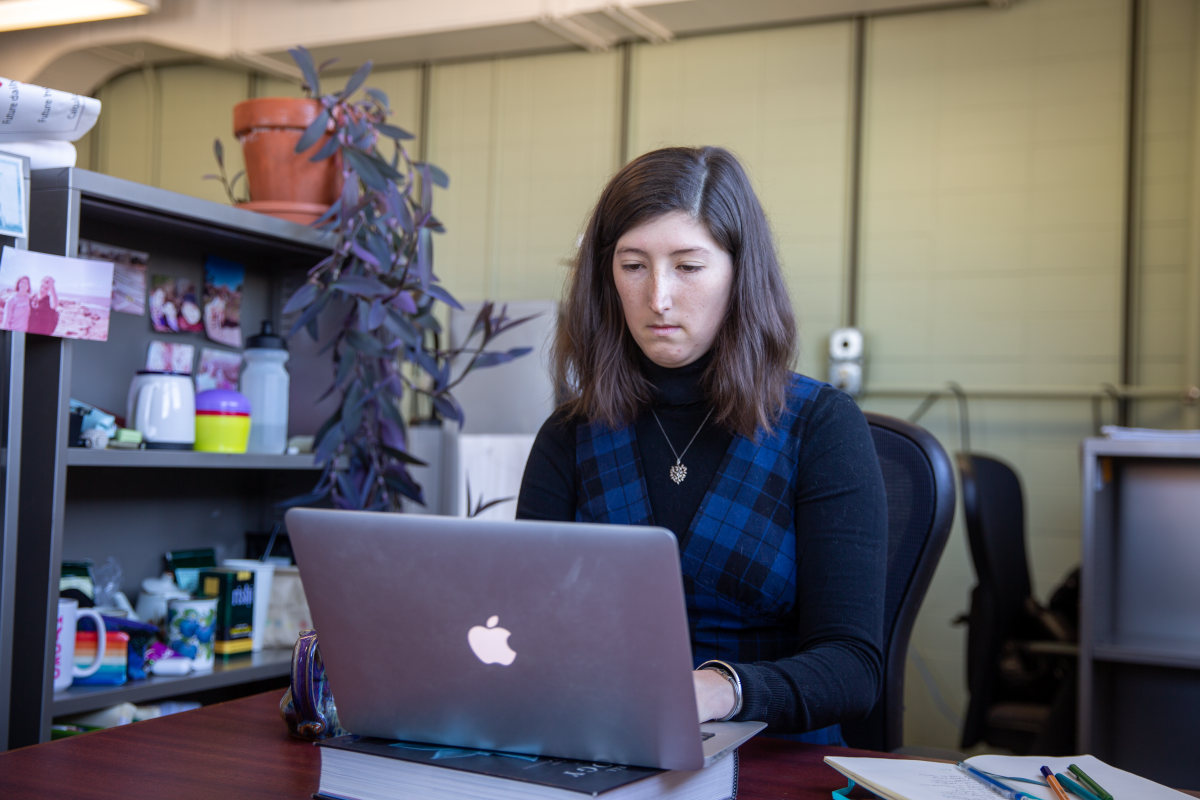
From this government experience, what drove you to graduate school to work in the Holloway lab at UW-Madison?
My professional strength throughline has always been my quantitative and analytical skills, and I wanted to expand these to better develop and implement policy. I think it's important for researchers and scientists to be part of policy conversations. I came to UW-Madison because I was drawn to the Energy Analysis and Policy (EAP) certificate. The classes and focus were exactly what I wanted. Also, I wanted to work with Tracey Holloway, who's my advisor, since much of her research is really policy-oriented. It's not us in a lab room thinking of research questions to ask that may be interesting only to other scientists. Rather, Tracey goes out into the world and talks to municipal governments, businesses, utilities, and nonprofit advocates and asks: what type of research is interesting to you? What are the timescales that you need this research done? She then tries to fit available air pollution tools and data to match their questions. It's policy-oriented but at the same time, it’s rigorous science that further develops the field.
What research are you currently working on in the Holloway lab?
In general, my research uses different air quality models to quantify public health benefits and environmental justice impacts of air pollution reductions. For example, I am looking at the air quality impact of energy system changes, like decarbonization and deployment of clean energy.
I'm currently using an air quality model that was developed by some of our colleagues. It's a reduced-form model, meaning that it’s easier to use, and has linear atmospheric relationships. It runs a lot faster than some of the very complicated atmospheric models. What is so special and unique about this model is it has a variable grid resolution, which is a fancy way of saying that in cities, where more people live, it has a higher resolution, so you can compare neighborhood-to-neighborhood pollution levels. Then in the mountains or deserts or other rural spaces where there are fewer people, it has a much coarser resolution, so the grid cell boxes are much bigger because we don’t need a neighborhood-to-neighborhood comparison if there are no neighborhoods.
In an urban city, with this model, you can evaluate air quality in many different neighborhoods. It's great for environmental justice questions, like if we turn off a power plant, what will air pollution reductions be? What will the overall public health benefit be? Who is affected most by this? Is it people of color who have been historically over-polluted and overburdened by air pollution? Or is it other communities? My research also uses satellite observations to refine this model and reduce biases and errors.
What do you look at with these models?
I am now looking at the main sources of pollution in cities across the United States. Is it from cars, power plants, or something else? For those different sources, who is the pollution causing the most harm to? Who is most exposed? This research shows that communities of color are disproportionately exposed to transportation-related pollution, which is one of the bigger causes of pollution in cities.
This allows us to think about different policy levers that could address these pollution disparities. It’s not just electrification, but also which neighborhoods are being electrified. When we are developing or expanding roads, is that going to increase or decrease the exposure disparities for communities of color? This analysis is hopefully a way for city managers or others developing pollution reduction strategies to think about both the magnitude of pollution that can be addressed by different sectors, but also equity.
This research shows that communities of color are disproportionately exposed to transportation-related pollution, which is one of the bigger causes of pollution in cities. This allows us to think about different policy levers that could address these pollution disparities.
Ciaran Gallagher
You are almost done with your Ph.D. What are your plans following that?
I am looking to defend my dissertation this semester, but alongside that, I am working part-time at Clean Wisconsin, which is a local nonprofit advocacy organization, as an Energy Manager advocating for a cleaner electricity grid in Wisconsin. I’ll be there full-time once I receive my Ph.D.
Last year, I was an intern at Clean Wisconsin, which helped me transition from academic thinking about air pollution to policy levers and changemakers in Wisconsin.
What do you do for fun outside of the lab?
I love being outside. I grew up in Southern California and I'm used to being outside almost every day of the year. In the summers in Madison, I row on a rowing team. In the winters, I've adopted cross-country skiing and love the fact that it gets me outside, especially in beautiful, wooded areas. I have also adopted gardening since I moved here and really love experimenting with cooking or pickling and preserving things from the farmers' market and my garden.

